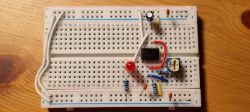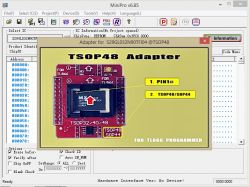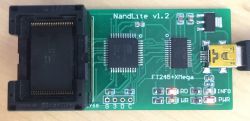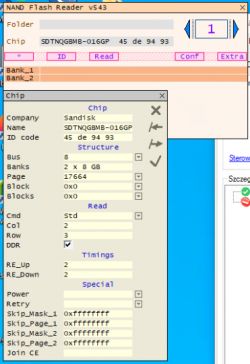FAQ
TL;DR: NANDLite v1 erases 512-MBit chips at 4.8 MB/s, “the TV came to life” after one flash [Elektroda, funak, post #16067358][#16667571]. First-time users need <3 min setup. Why it matters: hobbyists get pro-level NAND support without €900 lab gear.
Quick Facts
• Firmware: NANDLite! _R1.0v1.0b1024a [Elektroda, funak, post #18353353]
• Max measured write speed: 2.7 MB/s NAND→XMEGA, 980 kB/s PC link [Elektroda, funak, post #15973950]
• Auto-erase rate: 4.8 MB/s on 69 MB ST NAND512W3A [Elektroda, funak, post #16067358]
• Supported IC signatures: 70 + (SLC, MLC, ONFI) [Elektroda, funak, post #16449394]
• Kit price: approx. PLN 450; worldwide shipping PLN 21 [Elektroda, mailo, post #17314701][#17949208]
Which Windows versions run the current NANDLite software?
The online release 1.0.1014.89 runs on Windows XP, 7, 8, 10 (32 / 64-bit). SmartScreen blocks can be bypassed via “More info → Run anyway” [Elektroda, funak, post #18359665]
How fast can I dump a 2 GB K9GAG08U0E?
With v1 hardware set to 750 kB/s link speed, a full 2 GB read finishes in about 45 minutes; v2.0 (USB 3.0 + FPGA) targets 40 MB/s, cutting time to ≈55 s [Elektroda, funak, post #18250769]
What error level is acceptable during verify?
SLC devices allow 1-4 bit errors per 2 kB page; MLC K9GAG08U0E tolerates up to 24 bit flips—verify will flag but ECC corrects them in-device [Elektroda, funak, post #17878605][#16649962].
Can I add an unsupported NAND ID myself?
Yes. Pick a chip with matching geometry from the list, edit LUN-, block- and page-sizes, then save as a custom XML entry. Example: TC58BVG0S3HTA00 added by user in 5 min [Elektroda, bolvan, post #18061891]
Edge-case: app closes on erase under Windows XP. Fix?
Upgrade to Win 7 or newer; the crash is XP-specific to .NET 3.5 threading [Elektroda, tomasz w., post #18170875][fachura, #18171637].
How do I prepare a Samsung D5500 dump?
- Detect K9GAG08U0E.
- Press “Prepare file D5500”; select source dump and output file.
- Click “Erase”, then “Write”.
The wizard remaps all bad blocks and recreates the BBT automatically [Elektroda, funak, post #16649962]
Does NANDLite handle eMMC or SPI NOR?
v1.0: only parallel NAND. v1.2 will add SPI/I²C via EXT header; v2.0 will add eMMC and NOR through USB 3.0/FPGA adapter [Elektroda, funak, post #18223831]
What is the largest page size validated?
16 384 + 1 280 B pages (Hynix H27UCG8T2BTR-BC, 64 Gbit). Verify reports <130 flipped bits per page—well within the 640-bit ECC budget [Elektroda, funak, post #16876251]
How do I flash chips that need 1.8 V I/O?
Use NANDLite v2.0 or v1.0 with the dual-voltage adapter; set supply to 1.8 V and leave VCC at 3.0 V as per ONFI [Elektroda, funak, post #17298560]
Where can I buy genuine TSOP48 sockets?
Original Yamaichi TSOP48 cost ≈PLN 180 at Semicon; tested Chinese clones work but lose spring tension after ~100 insertions [Elektroda, tplewa, post #15976786][funak, #15979863].
Statistic: how many bad blocks are typical on a blank 8 GB MLC?
Four bad blocks (0.2 %) per die is typical; sample K9GAG08U0E showed 8 bad blocks right after erase [Elektroda, funak, post #16656035]
Can I program OneNAND or BGA eMMC today?
No. They need different command sets; support is planned for NANDLite 2.0 only [Elektroda, funak, post #17659451][#18223831].
Failure fact: what causes endless verify loops?
If geometry is unset (page = 0), the app enters an infinite verify loop—select a matching chip definition first [Elektroda, funak, post #18400138]
Quote from the author about future-proofing?
“Three versions will coexist and all will keep product support” [Elektroda, funak, post #18226506]











